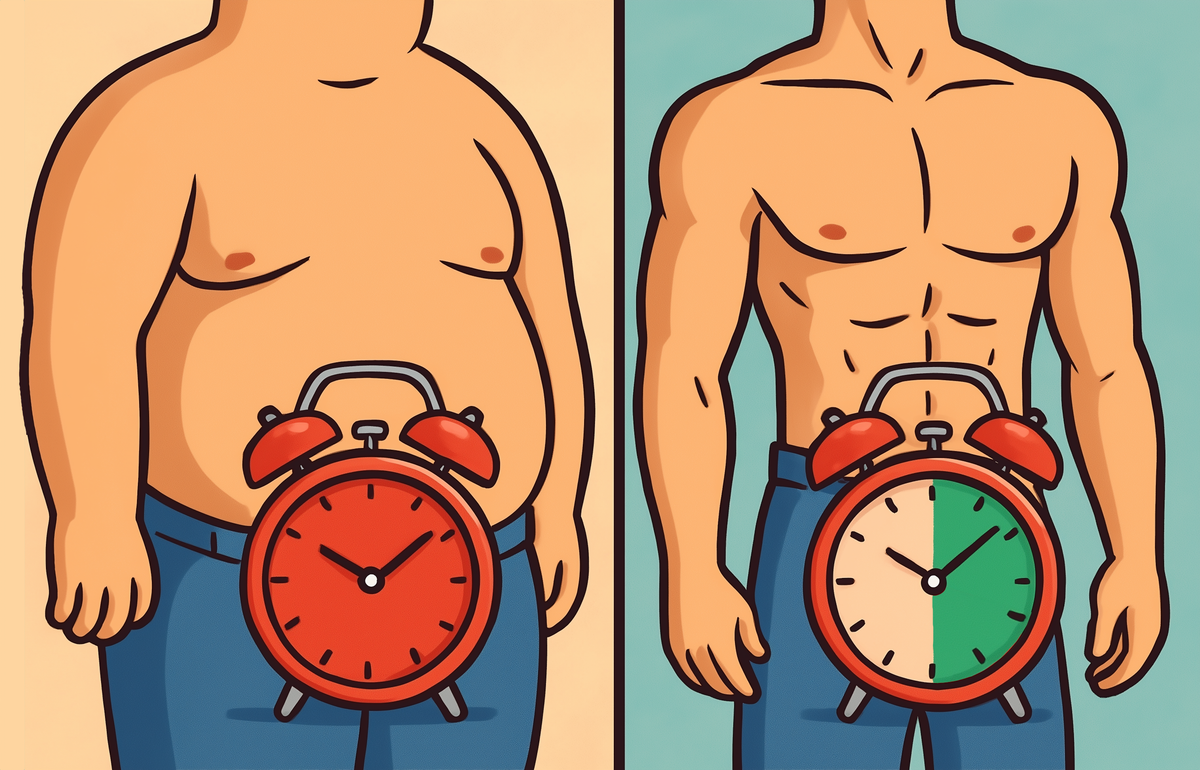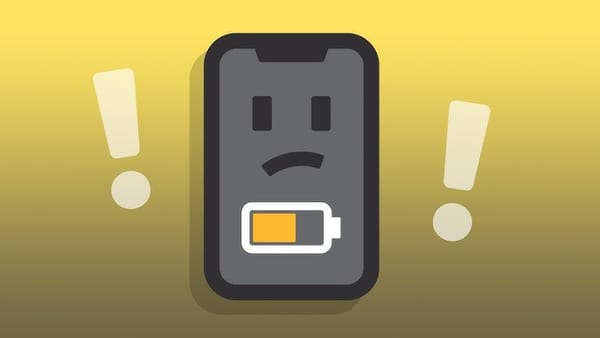Intermittent Fasting Explained: What It Is and How It Works
A science-backed look at intermittent fasting, why it’s effective for fat loss, and how to use it without overcomplicating your routine.

What Is Intermittent Fasting?
Intermittent fasting is an eating pattern where you cycle between periods of eating and fasting, focusing on when you eat rather than what.
Common methods include eating for 8 hours and fasting for 16 (16:8), or eating normally 5 days and restricting calories 2 days (5:2 diet).
It’s not a diet but a timing strategy, allowing you to enjoy your favorite foods within your eating window.
Why It Works for Fat Loss
IF helps with fat loss by naturally suppressing appetite, reducing daily calories without tracking, and improving hormonal balance.
Fasting lowers insulin, promoting fat burning, and increases human growth hormone (HGH), aiding fat loss and muscle maintenance.
Studies, like a 2020 review, show weight loss of 0.8% to 13% of starting weight.
How to Start and Stay Sustainable
Start with a realistic eating window, like 12:12 or 16:8, and gradually adjust. Drink water, black coffee, or tea during fasting to stay hydrated. Focus on nutrient-dense foods during eating times, and don’t obsess—treat it as a simple routine. IF is sustainable because it reduces decision fatigue, fits your lifestyle, and doesn’t restrict food types, making it easier to stick with long-term.
Survey Note: Comprehensive Analysis of Intermittent Fasting
Intermittent fasting (IF) has gained significant attention as a flexible eating pattern that cycles between periods of fasting and eating, focusing on when you eat rather than what.
This survey note provides a detailed exploration of IF, covering its definition, mechanisms for fat loss, common time splits, myths, sustainability, and practical starting tips, based on recent research and expert insights.
It aims to offer a thorough, professional analysis for readers seeking a deeper understanding, while acknowledging the complexities and controversies surrounding the topic.
Definition and Overview
Intermittent fasting is not a diet in the traditional sense but a timing strategy for meals.
It involves alternating between periods of eating and fasting, with fasting periods ranging from a few hours to a full day.
During fasting, you consume little to no calories, typically sticking to water, black coffee, or herbal tea.
The eating window allows for normal food intake, though experts recommend nutrient-dense foods like leafy greens, healthy fats, lean proteins, and whole grains, such as those in the Mediterranean diet.
Common methods include:
- 16/8 Method: Eating for 8 hours, fasting for 16 (e.g., eating from 12 PM to 8 PM).
- 5:2 Diet: Eating normally for 5 days and restricting calories (500–600) on 2 nonconsecutive days.
- Eat-Stop-Eat: Fasting for 24 hours once or twice a week, considered advanced for experienced fasters.
This flexibility makes IF appealing, as it doesn’t specify food types, allowing individuals to enjoy their favorite foods within the eating window.
Mechanisms for Fat Loss
IF is effective for fat loss due to several physiological mechanisms, supported by research:
- Natural Appetite Suppression: Fasting periods can reduce hunger hormones like ghrelin, leading to lower overall calorie intake without the need for strict tracking.
This aligns with findings from Johns Hopkins, noting that after hours without food, the body shifts to burning fat, a process called metabolic switching. - Reduced Daily Calories: Limiting the eating window naturally decreases calorie consumption, creating a deficit essential for fat loss.
A 2024 Johns Hopkins study found that time-restricted eating (TRE) with a 10-hour window reduced caloric intake by 200–550 calories/day, leading to weight loss over 2–12 months in adults with obesity. - Hormonal Advantages: Fasting lowers insulin levels, promoting fat burning, and increases human growth hormone (HGH), which aids in fat loss and muscle preservation.
Healthline notes that IF enhances insulin sensitivity, reduces insulin resistance, and may protect against type 2 diabetes.
Additionally, it initiates cellular repair (autophagy) and changes gene expression for longevity, based on animal studies.
A 2020 review highlighted weight loss ranging from 0.8% to 13% of starting weight, though these studies were small and short-term, indicating the need for more long-term research.
Common Time Splits and Practical ApplicationThere is no "best" fasting split—it depends on individual sustainability. Common methods include:
| Time Split | Description | Example |
|---|---|---|
| 12:12 | Eating for 12 hours, fasting for 12 hours | 8 AM to 8 PM |
| 16:8 | Eating for 8 hours, fasting for 16 hours | 12 PM to 8 PM |
| 6:18 | Eating for 6 hours, fasting for 18 hours | 1 PM to 7 PM |
| 5:2 Diet | Normal eating 5 days, 500–600 calories 2 days | Normal eating Mon–Fri, fast Sat–Sun |
| Eat-Stop-Eat | 24-hour fast once or twice weekly | Fast from dinner to dinner, e.g., 6 PM to 6 PM |
Healthline recommends starting with the 16:8 method for its simplicity and sustainability, especially for beginners.
The choice depends on lifestyle, with flexibility to adjust as needed.
Myths and Misconceptions
Several myths surround IF, which can be clarified with evidence:
- Myth: Fasting slows metabolism.
- Fact: Short-term fasting can increase metabolic rate as the body adapts to using fat for fuel.
Johns Hopkins notes that it takes 2–4 weeks for the body to adjust, with no significant metabolic slowdown observed in studies. Long-term effects require further research.
- Fact: Short-term fasting can increase metabolic rate as the body adapts to using fat for fuel.
- Myth: Fasting causes muscle loss.
- Fact: Muscle loss can be minimized by ensuring adequate protein intake and incorporating resistance training.
A study showed 16-hour fasting led to fat loss while maintaining muscle mass in young men, supporting this approach.
- Fact: Muscle loss can be minimized by ensuring adequate protein intake and incorporating resistance training.
- Myth: You can’t work out while fasting.
- Fact: You can exercise while fasting, but timing workouts around eating windows may optimize performance, especially for high-intensity exercises.
Healthline suggests experimenting to find what works, with many finding fasting workouts manageable.
- Fact: You can exercise while fasting, but timing workouts around eating windows may optimize performance, especially for high-intensity exercises.
Sustainability and Long-Term Viability
IF is often more sustainable than traditional diets due to its simplicity and flexibility:
- Less Decision Fatigue: You don’t need to track calories or macros—just follow a schedule, reducing mental load.
This aligns with findings from UIC, noting IF as easier to follow than calorie counting . - Works Around Your Lifestyle: Choose eating windows that fit your routine, whether you’re a night owl or early riser, making it adaptable to social and work commitments.
- No Food Restrictions: You don’t have to give up favorite foods; you just eat them within your eating window, enhancing long-term adherence.
Mayo Clinic notes that skipping meals might not fit social life, suggesting consultation with healthcare professionals for personalized plans.
How to Start and Practical Tips
Starting IF doesn’t have to be complicated. Here’s a step-by-step guide:
- Pick a Realistic Window: Begin with a 12:12 or 14:10 split (e.g., eating from 10 AM to 8 PM). Gradually tighten the window if comfortable, as Healthline suggests, starting with 16:8 for simplicity.
- Stay Hydrated: Drink water, black coffee, or herbal tea during fasting periods to reduce hunger and stay hydrated, as recommended by Johns Hopkins .
- Eat Nutrient-Dense Foods: During your eating window, focus on whole foods like leafy greens, healthy fats, lean proteins, and whole grains, aligning with the Mediterranean diet for optimal health.
- Don’t Obsess: Treat IF as a simple routine, not a strict rule. If you slip up, get back on track the next day, reducing stress and enhancing sustainability.
- Consult a Doctor: If you have health conditions (e.g., diabetes, eating disorders, pregnancy), are underweight, or have other concerns, consult a healthcare professional. Johns Hopkins advises checking with a doctor, especially for children, pregnant women, and those with type 1 diabetes.
For females, ease into IF and stop if concerns like missed periods arise, considering advice from a doctor or dietitian due to potential hormonal impacts. Healthline: Intermittent Fasting for Women.
Recent Research and ControversiesRecent studies provide valuable insights, highlighting both benefits and controversies:
- Johns Hopkins Study (2024): A randomized controlled trial found that time-restricted eating (10-hour eating window) led to similar weight loss as a regular eating pattern when calories were held constant.
The conclusion was that weight loss is likely due to reduced caloric intake from the shorter window, not meal timing, suggesting total calories may be more important.
This challenges the popularity of IF, with lead author Nisa Maruthur noting, “It makes us think that people who benefit from time-restricted eating—meaning they lose weight—it's probably from them eating fewer calories because their time window's shorter and not something else.” - University of Illinois Chicago Study (2023): For people with Type 2 diabetes, an 8-hour eating window (noon to 8 PM) led to greater weight loss and similar blood sugar control compared to a 25% calorie reduction.
Time-restricted eating was easier to follow, making it a promising option, with no serious adverse events reported over 6 months.
Controversies include:
- Mayo Clinic notes potential risks like feeling tired, dizziness, and increased heart disease risk with certain cycles (e.g., 16:8), especially for those with eating disorders or at risk of bone loss.
- The University of Sydney found that IF led to weight loss but not the same anti-inflammatory response seen in other weight loss methods, with limited clinically significant insulin sensitivity improvements .
These findings underscore the need for personalized approaches and further long-term research, especially given the current time (May 13, 2025), where no 2025 studies were found, suggesting the field is still evolving.
Safety and Contraindications
IF is not suitable for everyone. Johns Hopkins advises against it for children, teens under 18, pregnant or breastfeeding women, people with type 1 diabetes on insulin (due to hypoglycemia risks), and those with a history of eating disorders.
Potential side effects include anxiety, headaches, and nausea, with recommendations to consult a doctor if symptoms occur.
Healthline adds that individuals with diabetes, blood sugar issues, low blood pressure, or on medications should consult a doctor, emphasizing the importance of personalized medical advice.
ConclusionIntermittent fasting offers a flexible, science-backed approach to fat loss and health improvement, with mechanisms like appetite suppression, reduced calorie intake, and hormonal benefits.
It’s sustainable due to its simplicity and adaptability, making it easier to stick with long term.
However, controversies exist, with recent studies suggesting total calories may matter more than meal timing for weight loss, and potential risks for certain populations.
Starting with a realistic window, staying hydrated, and consulting a doctor ensures a safe and effective journey.
As research continues, especially given the lack of 2025 studies, IF remains a promising but nuanced strategy for health and weight management.
Key Citations
- Johns Hopkins Medicine Intermittent Fasting Definition Benefits
- Healthline Intermittent Fasting Guide Methods Benefits
- Johns Hopkins Hub Study Challenges Intermittent Fasting
- ScienceDaily Intermittent Fasting Type 2 Diabetes Study
- Mayo Clinic Intermittent Fasting Benefits Risks
- University of Sydney Intermittent Fasting Weight Loss Study
- Healthline Intermittent Fasting for Women Hormonal Impacts
- UIC Today Intermittent Fasting Research Safety Effectiveness



